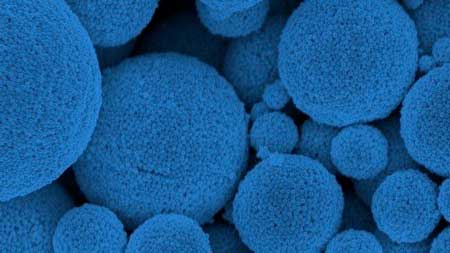Nanowerk December 12, 2019
Researchers at the Argonne National Laboratory created cell-like hollow capsule structures through the spontaneous self-assembly of hybrid gold-silver nanorods held together by weak interactions. By wrapping these capsules’ walls with a light-sensitive membrane protein called bacteriorhodopsin, the researchers were able to unidirectionally channel protons from the interior of the artificial cells to the external environment. The key to the research came from coupling the group of artificial cells that were generating protons to a second, distinct group of artificial cells. These cells contain molecular motor machinery that uses the proton gradient to generate ATP which is the fundamental unit of energy currency in biological systems. The research lays the groundwork for the engineering of colloidal supraparticle‐based synthetic protocells with higher‐order functionalities…read more. TECHNICAL ARTICLE

This scanning electron microscope image was taken of artificial “protocells” created at Argonne’s Center for Nanoscale Materials, which have the ability to convert light to chemical energy through the use of a light-harvesting membrane. (Image: Argonne National Laboratory)